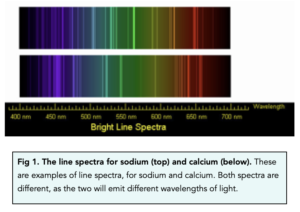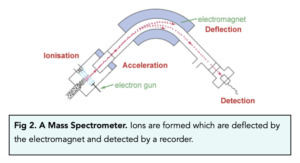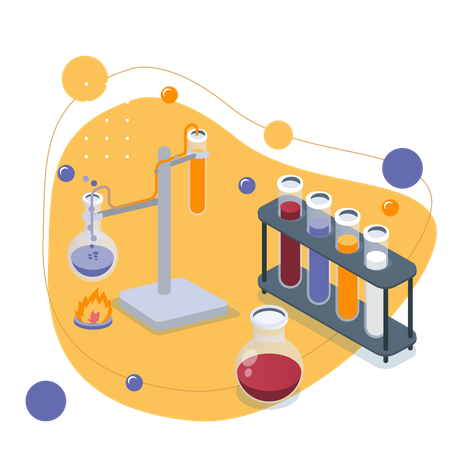Flame Emission Spectroscopy (GCSE Chemistry)
Flame Emission Spectroscopy
Flame Emission Spectroscopy
- Flame emission spectroscopy is an instrumental method. As we’ve just seen, flame emission spectroscopy is an instrumental method. It can identify ions in mixtures.
- Samples are placed into a flame. In the process of flame emission spectroscopy, samples are placed into a flame to heat up the ions they contain.
- Electrons are excited by the flame’s heat. As ions in the sample heat up, electrons are excited and gain energy. These electrons transfer this energy as light when they return to their original energy levels.
- A line spectrum is produced. The light produced is passed through a spectroscope and can produce a line spectrum. This line spectrum is the results of different wavelengths of light being detected.
- The line spectrum can be analysed. By analysing the line spectrum, the exact concentrations of metal ions in the original sample can be identified. Each ion emits a different set of light wavelengths: no two ions have the same wavelengths.
Interpreting Line Spectra
For exams, you need to be able to interpret line spectra. To do this, we must compare the sample’s spectrum to a reference spectrum. As the sample may contain two or more compounds, we must compare it to various reference spectra to find the correct match. Readings for different concentrations of a metal ion solution can be used to plot a calibration curve.

Mass Spectroscopy
- In mass spectroscopy, the sample is vaporised. By turning a sample into a gas, it can be passed through an electron beam. Therefore in mass spectroscopy, molecules lose electrons and become ions.
- Ions follow different paths reaching different points on the detector. As the ions pass through a strong magnetic field, the ions follow a curved path instead of a straight line.
- A small mass means more of a curve. The smaller the mass, the more of a curve is produced. The larger the mass, the less of a curve is produced.
- A mass spectrum is produced. A mass spectrum is a graph showing the peak for all the ions detected. Using these peaks we can identify the substances present in the sample, by looking at the mass to charge ratios.

Flame emission spectroscopy is a method of analyzing the composition of a sample by heating it in a flame and observing the light emitted by the sample. This light can provide information about the elements present in the sample.
Flame emission spectroscopy works by heating a sample in a flame. As the sample is heated, its electrons become excited and emit light. This light can be analyzed to determine the elements present in the sample.
The benefits of using flame emission spectroscopy include its accuracy, sensitivity, and versatility. It can be used to analyze a wide range of samples, including metals, salts, and organic compounds. It is also relatively inexpensive and easy to use.
Flame emission spectroscopy can be used to analyze a wide range of samples, including metals, salts, and organic compounds. It is particularly useful for analyzing samples that contain small amounts of a particular element.
The light emitted by a sample in flame emission spectroscopy is analyzed using a spectrophotometer. This instrument separates the light into its component colors and measures the intensity of each color. This information can then be used to identify the elements present in the sample.
The limitations of flame emission spectroscopy include its sensitivity to interference from other elements, its reliance on a well-constructed flame, and its inability to provide information about the quantity of an element in a sample.
Flame emission spectroscopy is used in a variety of industries, including mining, manufacturing, and environmental testing. For example, it can be used to analyze the composition of metals in a mine, the purity of chemicals in a manufacturing process, or the presence of contaminants in an environmental sample.






Still got a question? Leave a comment
Leave a comment